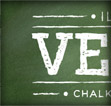
In this tutorial I’ll show you how to create a chalkboard vector with some gradients, a bristle brush, and some freebies from Vector Mill! The tutorial is relatively simple and can be applied to many other Illustrator projects.
Final Image
Below is the final chalkboard vector we will be shooting for.
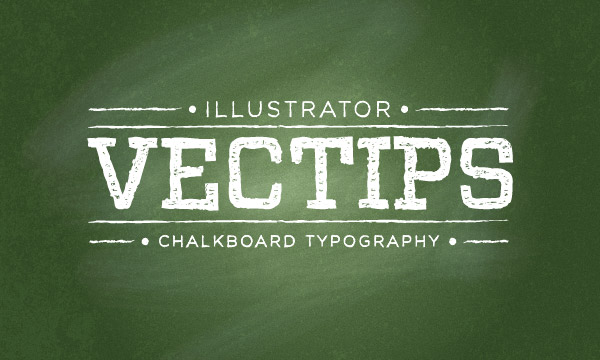
Tutorial Details
- Program: Adobe Illustrator CS5
- Difficulty: Beginner / Intermediate
- Topics Covered: Grain Effect, Bristle Brush, Brushes
- Estimated Completion Time: 15-20 minutes
- Required Files: Vector-Mill-Sample.ai (compatibility CS4-CS5)
Step 1
Create a new document and create a rectangle with the Rectangle tool (M). This will be our chalkboard vector background.
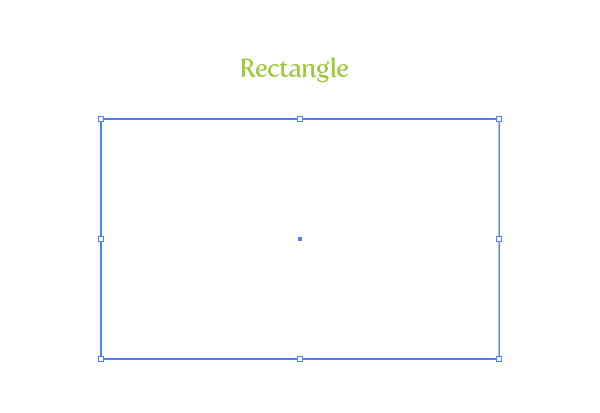
Step 2
Fill the new rectangle with a radial gradient, change the first color stop in the gradient to a green color, and the second color stop to a darker green color.
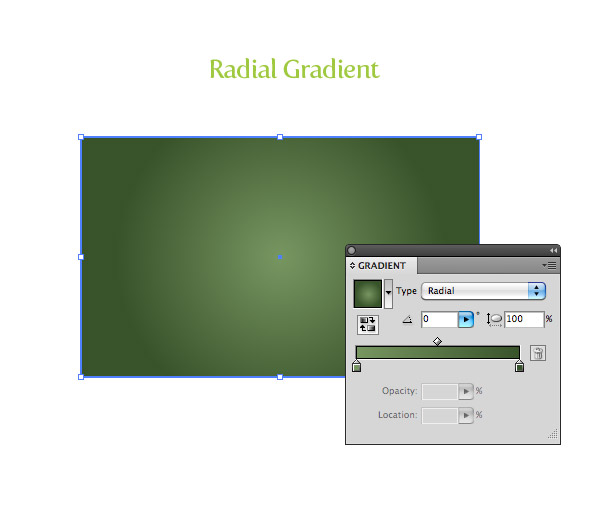
Step 3
With the rectangle still selected, open the pop-up menu of the Appearance panel, and choose Add New Fill. Fill the new item with a light gray.
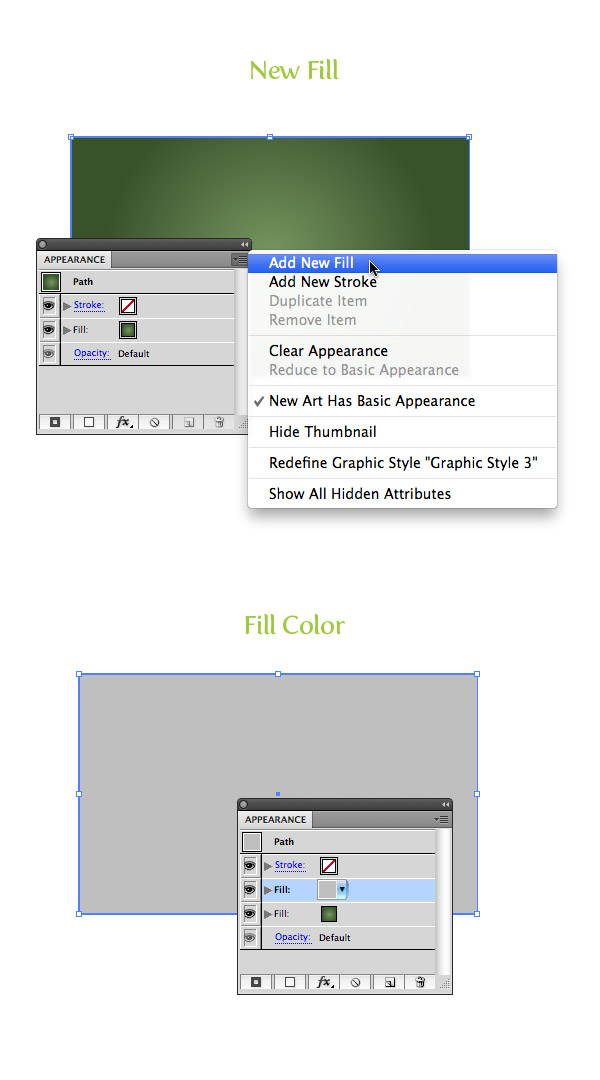
Step 4
With the new gray fill item selected in the Appearance panel, go Effect > Texture > Grain. In the Grain dialog, change the Intensity to 60, the Contrast to 50, and the Grain type to Sprinkles. Next, expand the gray fill item in the Appearance panel, click the Opacity item, and change the Blending mode to Multiply.
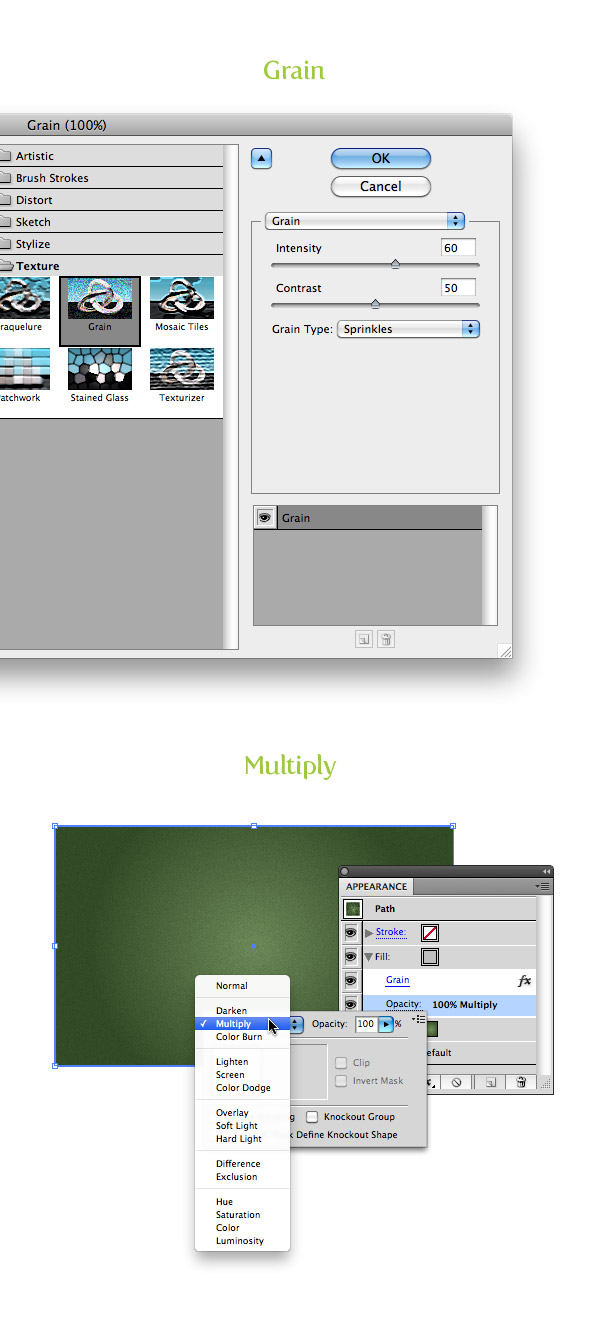
Step 5
For this step, you need to download the Vector-Mill-Sample.ai file. Open the file, Copy (Command + C) the big concrete texture, and Paste (Command + V) it over your green gradient. Fill the texture with white, set the Blending mode to Overlay and set the Opacity to 10 from the Transparency panel.
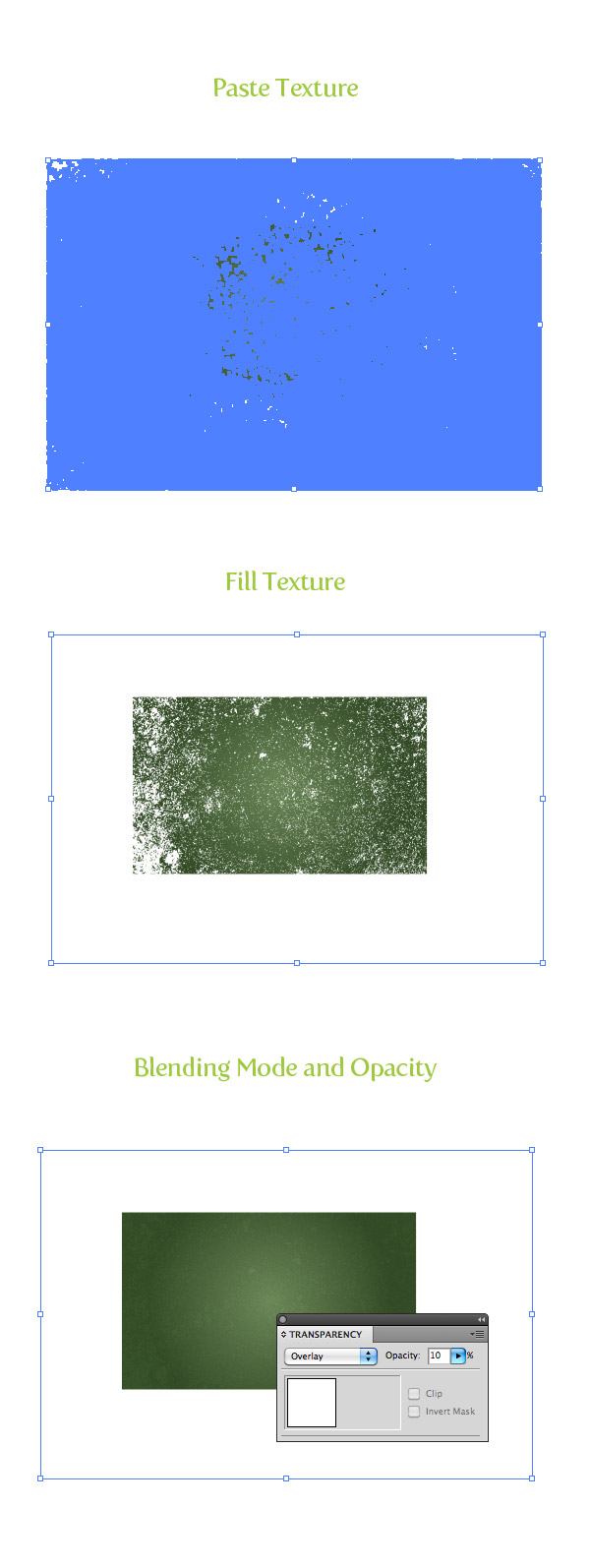
Step 6
We are almost done with the chalkboard vector background texture, but let’s add a little more depth with a Bristle Brush. If you are still not on CS5 you won’t be able to create this step like in the tutorial. As an alternative, you can use some of the watercolor art brushes I created a while back.
If you have CS5, start by pressing the New Brush button at the bottom of the Brush panel and choose New Bristle Brush from the dialog. In the Bristle Brush Options dialog, make these changes:
- Type = Round Fan
- Size = 10 mm
- Bristle Length = 150
- Bristle Density = 75
- Bristle Thickness = 50
- Paint Opacity = 15
- Stiffness = 100
Once you have these settings, select your Paintbrush tool (B) and draw some erratic overlapping paths on the chalkboard vector. That should do it for the background. Now onto the text!
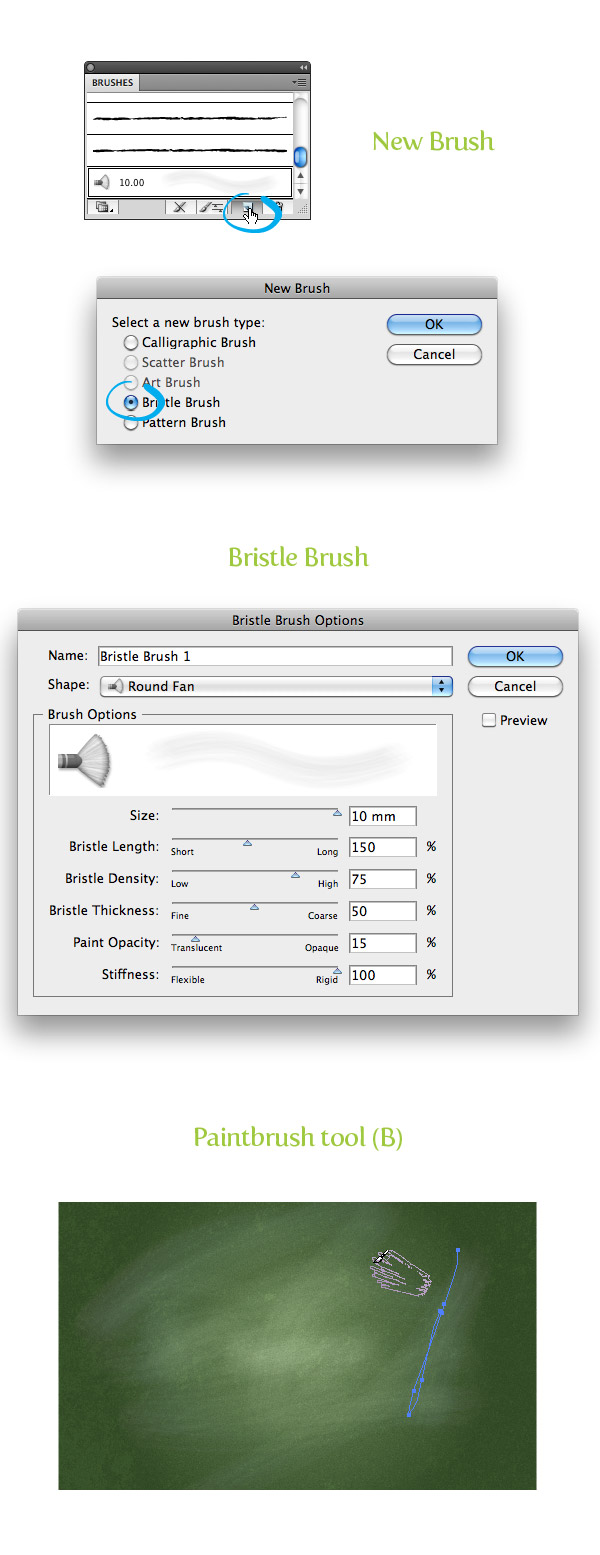
Step 7
With the Type tool (T), type out some text and choose a font. I’m using Vitesse Book for my text, but you can use whatever. After you have your text, remove the fill and stroke color. This makes it easier to use Appearance panel for the following steps.
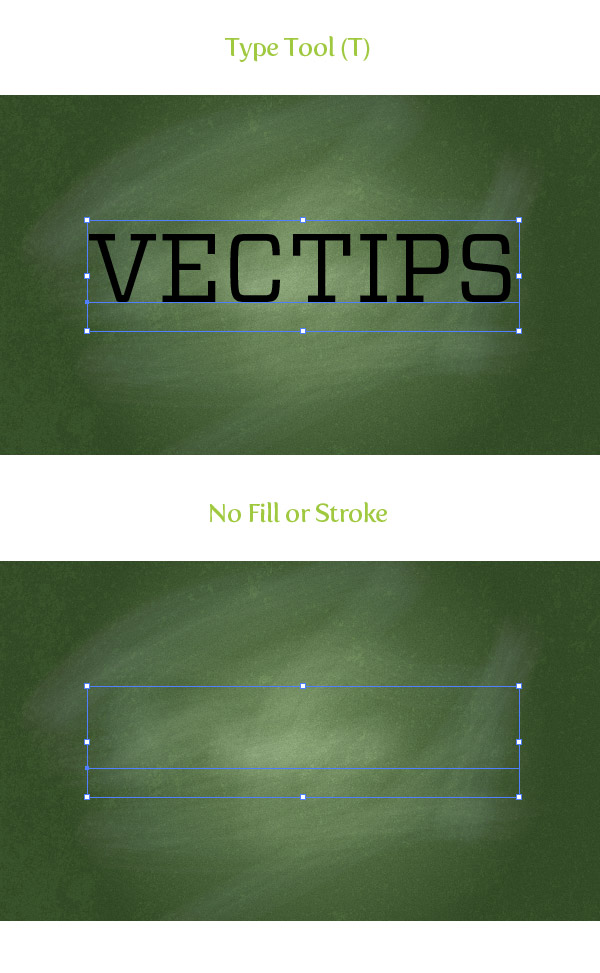
Step 8
From the pop-up menu of the Appearance panel, choose Add New Stroke and change the stroke color to white.
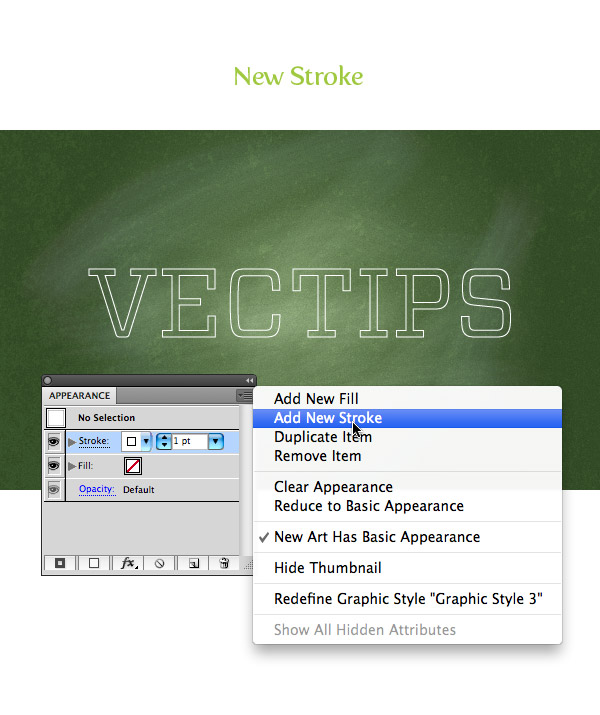
Step 9
Now hop over to the Vector-Mill-Sample.ai file again and select the brushes. Copy both brushes and paste them into your document. They now should be available in the Brushes panel. With your new white stroke item selected, choose the VM-Conté-01-Closed brush. To make it look a little thicker, change the stroke weight to 2 pt.
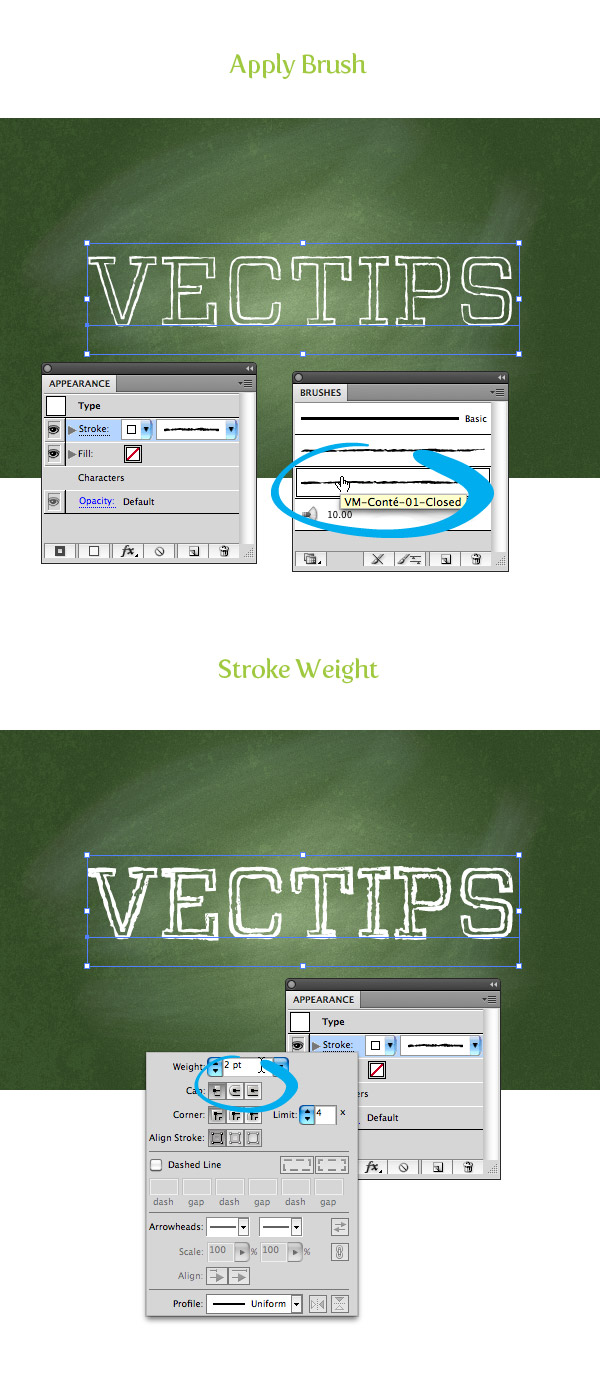
Step 10
For the fill of the text on this chalkboard vector, we need the last freebie in the Vector-Mill-Sample.ai file. Copy the rectangle filled with the pattern from the freebie document to your document. Note: the rectangle has a couple of fills associated with it just so you can see the seamless pattern. The pattern swatch will automatically copy into your Swatches panel once you paste the rectangle shape into your document. So right after you copy it into your doc, you can delete it.
With your text selected, choose the VM-WC-Paper-Seamless-Rev-White pattern swatch for the empty fill item in the Appearance panel.
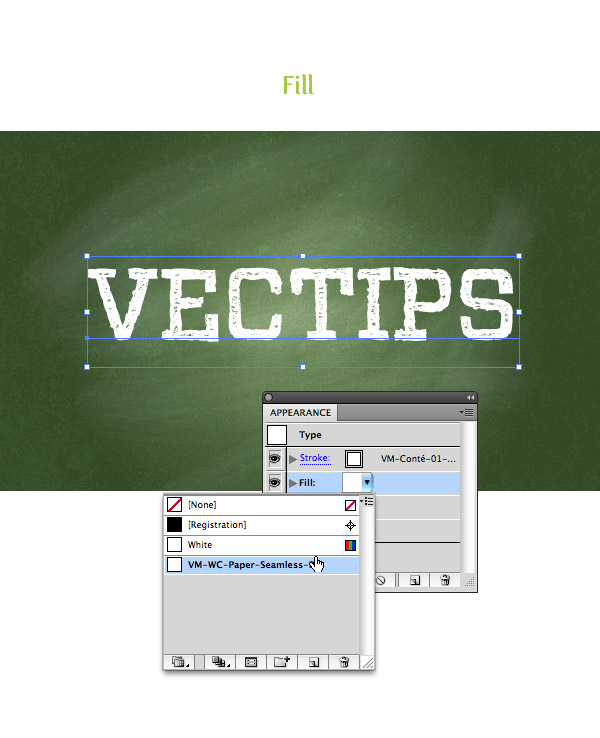
Final Image
That is pretty much it for this chalkboard vector! Pretty easy, right? You can add more text, strokes, and other elements to your chalkboard vector like I did in the final image. I created the lines with the Line Tool (\), applied the VM-Conté-01-Open brush to them, and adjusted the stroke weight for the other text.

The post How to Create a Chalkboard Vector appeared first on Vectips.
http://vectips.com/tutorials/create-a-chalkboard-type-treatment/

